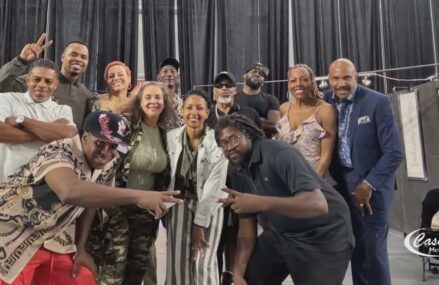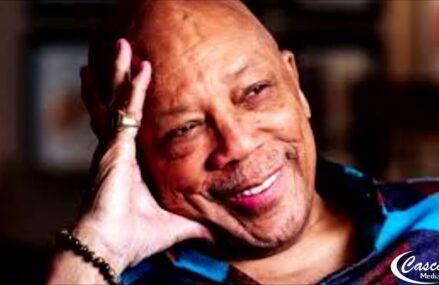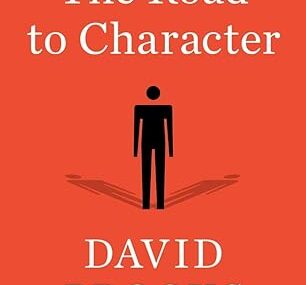1954–59: Mercury years
In 1953, Treadwell negotiated a contract for Vaughan with Mercury in which she would record commercial material for Mercury and jazz-oriented material for its subsidiary, EmArcy. She was paired with producer Bob Shad, and their working relationship yielded commercial and artistic success. Her debut recording session at Mercury took place in February 1954. She remained with Mercury through 1959. After recording for Roulette from 1960 to 1963, she returned to Mercury from 1964 to 1967.
Her commercial success at Mercury began with the 1954 hit “Make Yourself Comfortable”, recorded in the fall of 1954, and continued with “How Important Can It Be” (with Count Basie), “Whatever Lola Wants”, “The Banana Boat Song”, “You Ought to Have a Wife”, and “Misty”. Her commercial success peaked in 1959 with “Broken-Hearted Melody”, a song she considered “corny” which nevertheless became her first gold record,[11] and a regular part of her concert repertoire for years to come. Vaughan was reunited with Billy Eckstine for a series of duet recordings in 1957 that yielded the hit “Passing Strangers”. Her commercial recordings were handled by a number of arrangers and conductors, primarily Hugo Peretti and Hal Mooney.
The jazz “track” of her recording career proceeded apace, backed either by her working trio or combinations of jazz musicians. One of her favorite albums was a 1954 sextet date that included Clifford Brown.
In the latter half of the 1950s, she followed a schedule of almost non-stop touring. She was featured at the first Newport Jazz Festival in the summer of 1954 and starred in subsequent editions of that festival at Newport and in New York City for the remainder of her life. In the fall of 1954, she performed at Carnegie Hall with the Count Basie Orchestra on a bill that also included Billie Holiday, Charlie Parker, Lester Young, and the Modern Jazz Quartet. That fall, she again toured Europe before embarking on a “Big Show” U.S. tour, a succession of performances that included Count Basie, George Shearing, Erroll Garner, and Jimmy Rushing. At the 1955 New York Jazz Festival on Randalls Island, Vaughan shared the bill with the Dave Brubeck quartet, Horace Silver, Jimmy Smith, and the Johnny Richards Orchestra.
Although the professional relationship between Vaughan and Treadwell was quite successful through the 1950s, their personal relationship finally reached a breaking point and she filed for a divorce in 1958. Vaughan had entirely delegated financial matters to Treadwell, and despite significant income figures reported through the 1950s, at the settlement Treadwell said that only $16,000 remained. The couple evenly divided the amount and their personal assets, terminating their business relationship.
She made her UK debut in 1958 at Sunday Night at the London Palladium with several songs including “Who’s Got the Last Laugh Now”.[12]
1959–69: Atkins and Roulette
The exit of Treadwell from Vaughan’s life was precipitated by the entry of Clyde “C.B.” Atkins, a man of uncertain background whom she had met in Chicago and married on September 4, 1959. Although Atkins had no experience in artist management or music, Vaughan wished to have a mixed professional and personal relationship like the one she had with Treadwell. She made Atkins her manager, although she was still feeling the sting of the problems she had with Treadwell, and initially kept a closer eye on Atkins. Vaughan and Atkins moved into a house in Englewood, New Jersey.[6]
When Vaughan’s contract with Mercury ended in late 1959, she signed on with Roulette, a small label owned by Morris Levy, who was one of the backers of Birdland, where she frequently appeared. She began recording for Roulette in April 1960, making a string of large ensemble albums arranged or conducted by Billy May, Jimmy Jones, Joe Reisman, Quincy Jones, Benny Carter, Lalo Schifrin, and Gerald Wilson. She had pop chart success in 1960 with “Serenata” on Roulette and “Eternally” and “You’re My Baby”, a couple of residual tracks from her Mercury contract. She recorded After Hours (1961) with guitarist Mundell Lowe and double bassist George Duvivier and Sarah + 2 (1962) with guitarist Barney Kessel and double bassist Joe Comfort.
In 1961 Vaughan and Atkins adopted a daughter, Deborah Lois Atkins, known professionally as Paris Vaughan. However, the relationship with Atkins proved difficult and violent. After several incidents, she filed for divorce in November 1963. She turned to two friends to help sort out the financial affairs of the marriage. Club owner John “Preacher” Wells, a childhood acquaintance, and Clyde “Pumpkin” Golden Jr. discovered that Atkins’ gambling and spending had put Vaughan around $150,000 in debt. The Englewood house was seized by the IRS for nonpayment of taxes. Vaughan retained custody of their child and Golden took Atkins’ place as Vaughan’s manager and lover for the remainder of the decade.
When her contract with Roulette ended in 1963, Vaughan returned to the more familiar confines of Mercury. In the summer of 1963, she went to Denmark with producer Quincy Jones to record Sassy Swings the Tivoli, an album of live performances with her trio. During the next year, she made her first appearance at the White House for President Lyndon Johnson. The Tivoli recording would be the brightest moment of her second stint with Mercury. Changing demographics and tastes in the 1960s left jazz musicians with shrinking audiences and inappropriate material. Although she retained a following large and loyal enough to maintain her career, the quality and quantity of her recorded output dwindled as her voice darkened and her skill remained undiminished. At the conclusion of her Mercury deal in 1967, she lacked a recording contract for the remainder of the decade.
1970–82: Fisher and Mainstream
Dizzy Gillespie and Sarah Vaughan perform at the White House in honor of the Shah of Iran on November 15, 1977.
In 1971, at the Tropicana in Las Vegas, Marshall Fisher was a concession stand employee and fan when he was introduced to Sarah Vaughan. They were attracted to each other immediately. Fisher moved in with her in Los Angeles. Although he was white and seven years older, he got along with her friends and family. Although he had no experience in the music business, he became her road manager, then personal manager. But unlike other men and managers, Fisher was devoted to her and meticulously managed her career, and treated her well. He wrote love poems to her.[7]:277
In 1971, Bob Shad, who had worked with her as a producer at Mercury, asked her to record for his label, Mainstream, which he had founded after leaving Mercury. Breaking a four-year hiatus, Vaughan signed a contract with Mainstream and returned to the studio for A Time in My Life, a step away from jazz into pop music with songs by Bob Dylan, John Lennon, and Marvin Gaye arranged by Ernie Wilkins. She didn’t complain about this eclectic change in direction, but she chose the material for her next album after admiring the work of Michel Legrand. He conducted an orchestra of over one hundred musicians for Sarah Vaughan with Michel Legrand, an album of compositions by Legrand with lyrics by Alan and Marilyn Bergman. The songs brought some of the musicians to tears during the sessions. But Shad wanted a hit, and the album yielded none.[7]:278–280 She sang a version of the pop hit “Rainy Days and Mondays” by the Carpenters for Feelin’ Good.[7]:283 This was followed by Live in Japan, her first live album since 1963.[7]:293 Sarah Vaughan and the Jimmy Rowles Quintet (1974) was more experimental, containing free improvisation and some unconventional scatting.[7]:294
Send in the Clowns was another attempt to increase sales by breaking into the pop music market. Vaughan disliked the songs and hated the album cover depicting a clown with an afro. She filed a lawsuit against Shad in 1975 on the belief that the cover was inconsistent with the formal, sophisticated image she projected on stage. She also contended that the album Sarah Vaughan: Live at the Holiday Inn Lesotho had an incorrect title and that Shad had been harming her career.[7]:295–296 Although she disliked the album, she liked the song “Send in the Clowns” written by Steven Sondheim for the musical A Little Night Music. She learned it on piano, made many changes with the help of pianist Carl Schroeder, and it became her signature song.[7]:300–305
In 1974, she performed music by George Gershwin at the Hollywood Bowl with the Los Angeles Philharmonic. The orchestra was conducted by Michael Tilson Thomas, who was a fan of Vaughan and invited her to perform.[7]:306–307 Thomas and Vaughan repeated the performance with Thomas’s home orchestra in Buffalo, New York, followed by appearances in 1975 and 1976 with other symphony orchestras in the United States.[7]:310
After leaving Mainstream, she signed with Atlantic and worked on an album of songs by John Lennon and Paul McCartney that were arranged by Marty Paich and his son, David Paich of the rock band Toto. She was enthusiastic to be more involved in the making of an album, but Atlantic rejected it on the claim that it contained no hits. “I don’t know how they can recognize hits in advance”, she said. Atlantic canceled her contract. She said, “I don’t give a damn about record companies anymore”.[7]:297
From Wikipedia



